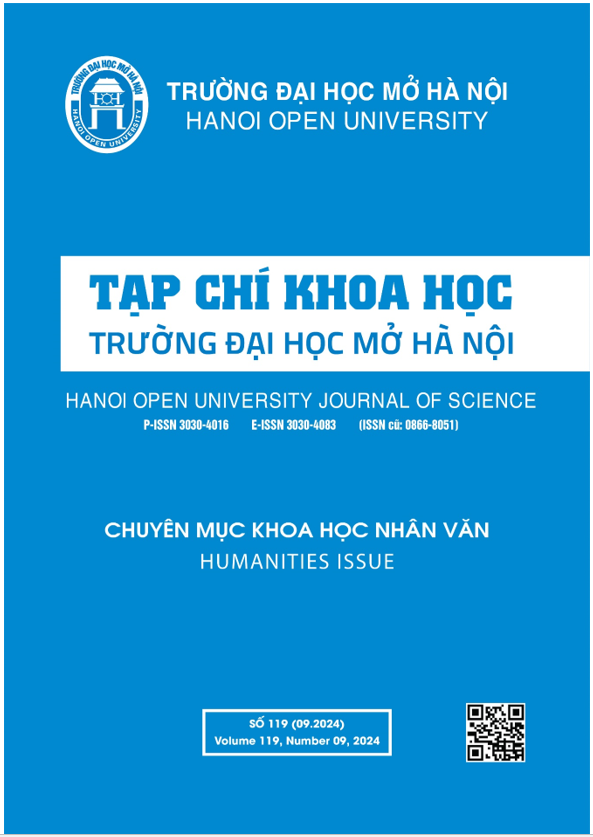THE APPLICATION OF ARTIFICIAL INTELLIGENCE IN TEACHING WRITING SKILLS TO ENGLISH MAJOR STUDENTS AT THE NATIONAL ACADEMY OF PUBLIC ADMINISTRATION: BENEFITS AND CHALLENGES
DOI:
https://doi.org/10.59266/houjs.2024.457Từ khóa:
Artificial intelligence (AI), Teaching writing skills, English major students, Benefits, Challenges, Personalized learningTóm tắt
Artificial intelligence (AI) has become a key educational tool in the digital age. This study explores AI's integration into teaching writing skills to English majors at the National Academy of Public Administration, focusing on its benefits and challenges. Using a mixed-methods approach, the research combines quantitative and qualitative data. In particular, a survey of 150 students shows a significant improvement in writing scores, increasing from an average of 5.4/10 to 7.9/10 after using AI tools. Qualitative data from interviews and classroom observations reveal that AI provides prompt feedback, reduces instructors' workload, and supports personalized learning. However, challenges such as high costs, accessibility issues, and inconsistent feedback quality are noted. The findings demonstrate significant improvements in writing skills with AI, but challenges related to accessibility and feedback quality must be addressed. This study clarifies AI's role in writing instruction and offers recommendations for enhancing technology's use in education.
Tài liệu tham khảo
[1]. Bengio, Y. (2016). Deep learning of representations for unsupervised and supervised learning. MIT Press.
[2]. Carnegie Mellon University. (n.d.). Duolingo: The impact of AI on language learning. Retrieved from https://www. cmu.edu/duolingo
[3]. Crawford, K. (2021). Atlas of AI: Power, politics, and the planetary costs of artificial intelligence. Yale University Press.
[4]. EdTechXGlobal. (2022). AI in language education: Benefits and challenges. EdTechXGlobal Report.
[5]. Li, F.-F. (2020). AI and the future of learning. Stanford University Press.
[6]. Google Assistant. (n.d.). Improving language skills with Google Assistant. Retrieved from https://assistant.google.com
[7]. Grammarly. (n.d.). How Grammarly uses AI to improve writing. Retrieved from https://www.grammarly.com
[8]. Hsu, P.-S., & Ching, Y.-H. (2021). Artificial intelligence in education: Opportunities and challenges. Educational Technology Research and Development, 69(3), 657-678.
[9]. He, W., Wang, X., & Chen, Y. (2022). The effects of AI-driven feedback on writing skills. Journal of Educational Technology, 41(2), 245-261.
[10]. Liu, T., & Zhang, H. (2018). Challenges in AI-driven language processing. Computational Linguistics, 44(4), 667-688.
[11]. Ng, A. (2018). Artificial intelligence: A guide for the perplexed. AI Quarterly, 32(1), 15-29.
[12]. Persing, I., & Ng, H. (2016). The role of AI in automated grammar correction. In Proceedings of the Conference on Natural Language Learning (pp. 27-34).
[13]. Rosetta Stone. (n.d.). AI in language learning: How Rosetta Stone adapts to students. Retrieved from https://www. rosettastone.com
[14]. Russell, S., & Norvig, P. (2014). Artificial intelligence: A modern approach (3rd ed.). Prentice Hall.
[15]. UNESCO. (2020). The impact of artificial intelligence on education. UNESCO Report.
[16]. Bengio, Y. (2016). Deep learning and the future of AI. MIT Technology Review, 19(3), 45-56.
